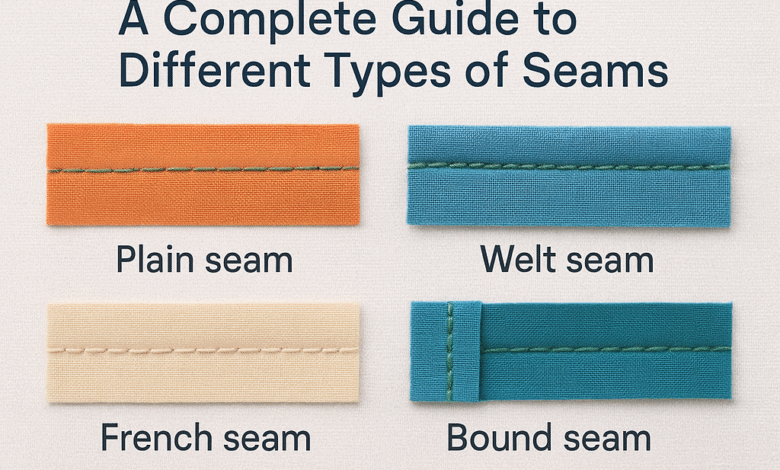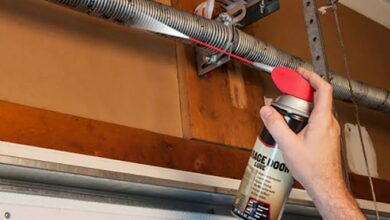Nahttypen: A Complete Guide to Different Types of Seams

The world of sewing and garment construction, Nahttypen—or types of seams—play a crucial role in determining the strength, appearance, and comfort of a finished piece. Whether you are a professional tailor, a fashion design student, or a DIY enthusiast, understanding different Nahttypen can dramatically improve the quality and durability of your creations. From simple straight seams to more complex flat-felled or French seams, each type serves a distinct purpose. In this guide, we’ll explore what Nahttypen are, their key characteristics, and where each is best used.
What Are Nahttypen?
The term Nahttypen refers to the various types of seams used in sewing to join two or more pieces of fabric. A seam is more than just a line of stitching—it’s a structural component that holds garments together and influences their shape, comfort, and longevity. The choice of seam type depends on several factors, including fabric type, garment design, stress points, and desired aesthetic.
While the basic principle of sewing seams remains the same—stitching fabric pieces together—different Nahttypen can produce vastly different results. Some are designed for strength and durability, while others focus on achieving a clean, professional finish.
Common Nahttypen and Their Uses
Let’s take a closer look at some of the most common Nahttypen found in sewing.
1. Plain Seam (Geradstichnaht)
The plain seam is the most fundamental and widely used type of seam. It involves placing two pieces of fabric right sides together and sewing along the edge, usually with a straight stitch. The raw edges are then finished with a zigzag stitch or serger to prevent fraying.
-
Best for: General garment construction
-
Advantages: Simple, quick, and versatile
-
Disadvantages: Raw edges may fray without proper finishing
The plain seam is ideal for most woven fabrics and forms the foundation for understanding other, more advanced Nahttypen.
2. French Seam (Französische Naht)
The French seam is a classic choice for lightweight or delicate fabrics such as silk, chiffon, or organza. This seam encloses the raw edges inside a double fold, giving the inside of the garment a clean and professional look.
-
Best for: Lightweight, sheer fabrics
-
Advantages: Neat, durable, hides raw edges
-
Disadvantages: Slightly bulky for thick fabrics
This seam type is common in high-end fashion and lingerie due to its polished appearance and soft finish.
3. Flat-Felled Seam (Kappnaht)
A flat-felled seam is known for its strength and durability, making it ideal for heavy-duty garments like jeans, workwear, and sportswear. The raw edges are folded inside and stitched flat to the garment, creating a double-stitched, sturdy seam.
-
Best for: Denim, uniforms, outerwear
-
Advantages: Extremely strong, no raw edges
-
Disadvantages: Time-consuming to sew
Flat-felled seams not only look clean on both sides but also provide excellent resistance to wear and tear—perfect for garments that experience a lot of stress.
4. Overlocked Seam (Versäuberungsnaht)
An overlocked seam, also called a serged seam, is commonly used in modern garment manufacturing. It uses a serger (overlock machine) to stitch, trim, and finish the edges simultaneously. The result is a clean, stretchable seam often found in knitwear and casual clothing.
-
Best for: Knit fabrics, stretchy materials
-
Advantages: Fast, prevents fraying, allows flexibility
-
Disadvantages: Requires a serger machine
Overlocked seams are ideal for T-shirts, sportswear, and any fabric that benefits from stretch and neat edge finishing.
5. Lapped Seam (Überlappte Naht)
A lapped seam involves overlapping one fabric edge over another and stitching them together. This technique is often used in leatherwork, denim, and decorative sewing.
-
Best for: Leather, denim, upholstery
-
Advantages: Strong and decorative
-
Disadvantages: Requires precision for neat results
Lapped seams are also common in reversible garments and outerwear where both sides may be visible.
6. Bound Seam (Eingefasste Naht)
The bound seam encloses raw edges with a bias tape or fabric strip, giving the seam a decorative and professional look. It’s particularly popular in unlined jackets and coats.
-
Best for: Unlined garments, high-end finishes
-
Advantages: Clean, decorative, durable
-
Disadvantages: Requires extra material and time
Bound seams add both beauty and functionality, protecting raw edges from wear while enhancing the garment’s inside appearance.
How to Choose the Right Nahttyp
Selecting the right Nahttyp depends on the project requirements. Here are some key considerations:
-
Fabric Type: Lightweight fabrics benefit from French seams, while heavy fabrics suit flat-felled or lapped seams.
-
Garment Function: Everyday clothing may use simple seams, while sportswear needs flexible seams like overlocked ones.
-
Durability Needs: Stress points such as armholes or inseams require strong seam types.
-
Aesthetic Preference: Some seams are purely functional, while others add decorative flair.
Understanding these factors helps you select a seam that balances appearance, strength, and practicality.
Read More: Shop Sunnylife Giant Jumbling Tower: The Ultimate Outdoor Game for Fun Seekers
Final Thoughts on Nahttypen
Mastering different Nahttypen is a vital skill for anyone passionate about sewing. Each seam type has its strengths and ideal use cases, and knowing when to use them ensures your garments not only look great but also stand the test of time. From the simplicity of the plain seam to the refined elegance of the French seam or the rugged durability of the flat-felled seam, every Nahttyp contributes to the craftsmanship behind a well-made piece.
So, whether you’re constructing your first project or refining professional techniques, take the time to explore and practice different Nahttypen. With experience, you’ll find that the right seam can transform your sewing from good to exceptional.



